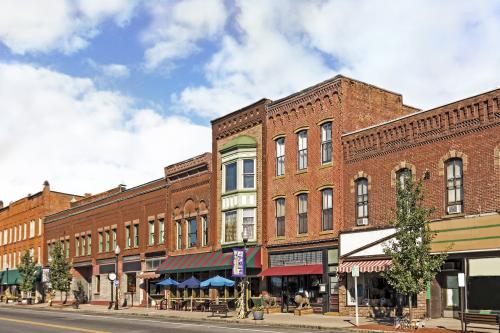Join us on June 29 for a webinar event—The future of place-based investments: New tools to align planning, infrastructure, and economic development—discussing this report. Register here to attend.
Traditional built environment and economic development practices are falling short in the face of a convergent set of environmental, economic, and social challenges. With each passing year, more communities find themselves vulnerable to extreme weather events; income disparities continue to rise, leaving too many households unable to afford essential services; and employers, especially many young and minority-owned businesses, often struggle to find talented workers and access financial capital.
Public, private, and civic leaders increasingly recognize that achieving inclusive growth and designing resilient communities require more than recruiting out-of-town businesses or attempting to reduce highway congestion. Those leaders need a new kind of policy playbook—one that addresses the cross-sectoral challenges regions face and designs strategies across disciplines.
An Economic Value Atlas, or EVA, is part of that playbook. An EVA is a regional engagement, value-setting, and measurement process culminating in an interactive regional map that indexes neighborhood-level, value-based performance metrics. The overall framework helps practitioners delve into geographic disparities in how the region is living up to its values—opening the door to more equitable, place-based decisionmaking for business, infrastructure, and land use purposes.
Over the course of 18 months, Brookings Metro worked with a cohort of three metropolitan regions—Kansas City, MO-KS; Minneapolis-Saint Paul, MN; and Portland, OR-WA—to co-develop and refine the EVA framework. Cohort members shared lessons around community engagement and values alignment, tested new methods to measure progress, and considered various policy reforms. This roadmap summarizes the results of that process and presents a replicable set of lessons that other interested regional leaders could use to launch their own EVA.
The EVA framework consists of five phases of work, each of which can be adjusted based on unique local conditions:
- The EVA’s leadership team sets a stakeholder table with a diverse collection of regional voices to serve as the board of directors for the EVA process.
- The leadership team and stakeholder table develop a shared vision—a collection of specific long-term goals a region would like to achieve.
- A research-driven team translates values into indicators and metrics using sets of categorical indicators and quantitative metrics that reflect the goals stakeholders would like to achieve.
- A coding team develops and launches EVA software, which uses dynamic and flexible data to benchmark neighborhood performance relative to regional goals.
- The leadership team works with government and civic leaders to inform and guide policy and investment decisions using EVA outputs.
Critically, the EVA framework is designed to deliver results. Regional leaders can use the EVA’s multiple variables and open access to inform a wide set of common activities, from improving industrial site selection to prioritizing pedestrian infrastructure projects to finding gaps in access to public health and educational institutions. The EVA is especially attuned to locate neighborhoods of interest based on conditions directly tied to regional values.
For example, Portland’s EVA helped create an Equitable Development Index, which informed a future light rail investment and a region-wide ballot initiative. And in Kansas City, regional planners are using an EVA to enhance a competitive grant program.
Even amidst this progress, the EVA framework is not static. The entire process is meant to be refined in each community based on their own goals, tastes, and capacities. Nor is the EVA framework fully mature. There are still clear areas for exploration and refinement, which are discussed in the report’s “Areas for growth” section.
The EVA framework offers a versatile system to support stakeholders in any region who want to foster greater alignment between their economic vision and built environment practice. As more people in more places experiment with the framework—building regional consensus, launching their own software, and testing new community engagement methods—the framework will continue to evolve. Our hope is such an emerging community of practice leads to more competitive and collaborative regions across the country.
The Brookings Institution is committed to quality, independence, and impact.
We are supported by a diverse array of funders. In line with our values and policies, each Brookings publication represents the sole views of its author(s).





